

Max Davies
2026 GWM Cannon Ultra review
6 Days Ago
Could the electric Dodge Charger Daytona SRT spawn a petrol-powered version after all, with a twin-turbo inline six?

News Editor
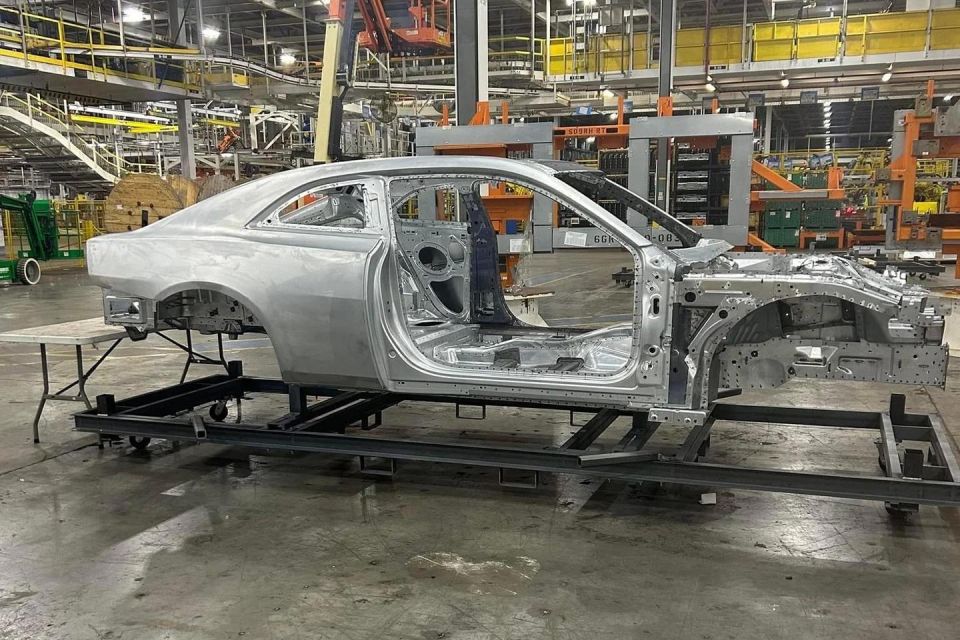

News Editor
Dodge’s electric muscle car looks like it’s making the transition from concept to production with few changes – except, perhaps, for one large one.
Images shared on the Challenger Talk forum appear to show the body-in-white of the production Dodge Charger Daytona SRT sitting on a factory floor.
Though Dodge has used the heritage Challenger name on its two-door Ford Mustang rival this century and has kept the even older Charger nameplate for a related four-door sedan, last year’s Charger concept was a coupe – a body style continued for the production model.
While the car keeps the concept’s coke-bottle contours, inspired by Chargers of the 1960s, there are some subtle visual differences, like the presence of a B-pillar. More intriguing, however, is the presence of what appears to be a transmission tunnel.
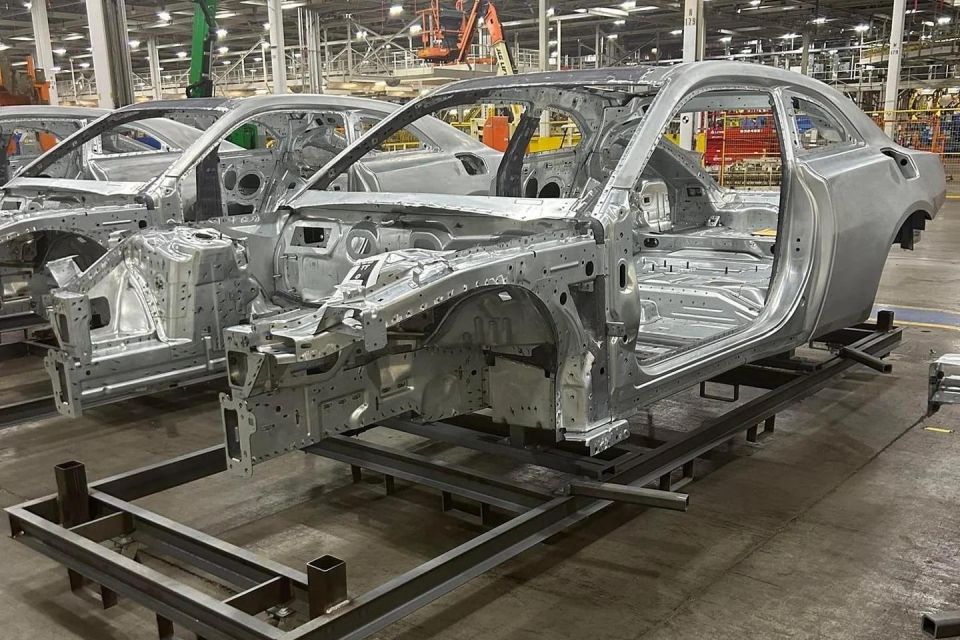
Dodge CEO Tim Kuniskis has previously confirmed the new STLA Large architecture is a “multi-energy platform” that “has the ability to run an ICE engine”.
“I can take the floor pan out. I can take the battery out. I can put a drive-shaft tunnel in there. The platform is made to be able to do that. It’s modular,” he told The Drive last year.
“I can put an ICE engine in it. It doesn’t mean we’re going to.
“We’re certainly not launching with anything like that. We’re launching full battery electric.”
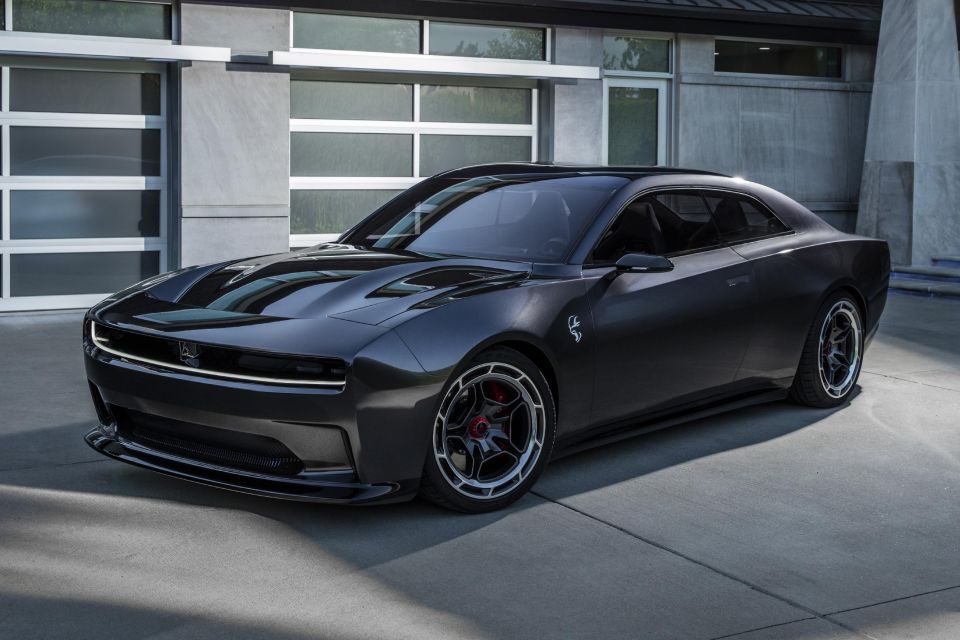
That denial hasn’t stopped rumours of Dodge putting the new Hurricane twin-turbocharged inline six into its next-generation Charger.
In its highest-output tune, this 3.0-litre six pumps out 380kW of power and 677Nm of torque. But Ram is rumoured to be using a 410kW tune in its 1500 TRX replacement, and Stellantis has confirmed the Hurricane six will be available with a plug-in hybrid system which could boost outputs further.
Dodge has previously confirmed 340kW, 370kW, 400kW, 440kW, 470kW and 500kW electric powertrains for the production Charger EV, using a 400V electrical system.
The brand had also previously announced a more powerful option using an 800V electrical system, which could produce up to 660kW.
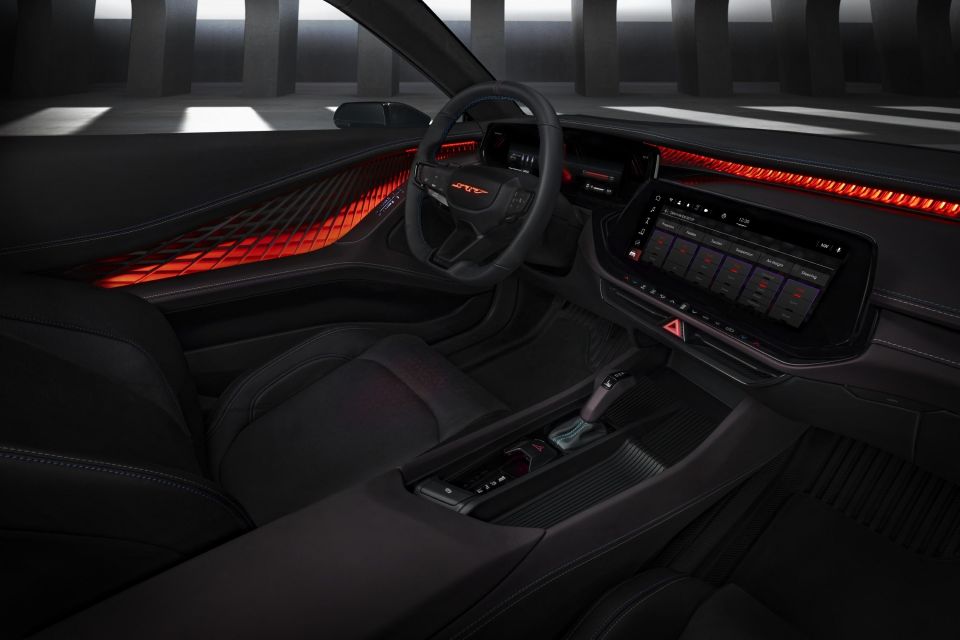
For reference, the supercharged 6.2-litre V8 engine fitted to Charger and Challenger Hellcat Redeye makes 594kW and 959Nm. Customers will be able to purchase upgrades or “crystals” from the brand’s dealerships.
Dodge will lock out aftermarket tuners, while these upgrade kits will be tied to the car and its VIN, so all subsequent owners will be able to use all purchased upgrades for a particular vehicle.
The STLA Large architecture will support battery capacities of between 101kWh and 118kWh, allowing for up to 800km of driving between charges, and for both single-motor rear-wheel drive and dual-motor all-wheel drive powertrains.
This architecture will not only underpin Dodge’s new muscle car, but also a variety of cars and SUVs across other Stellantis brands like Alfa Romeo, Chrysler, and Jeep.
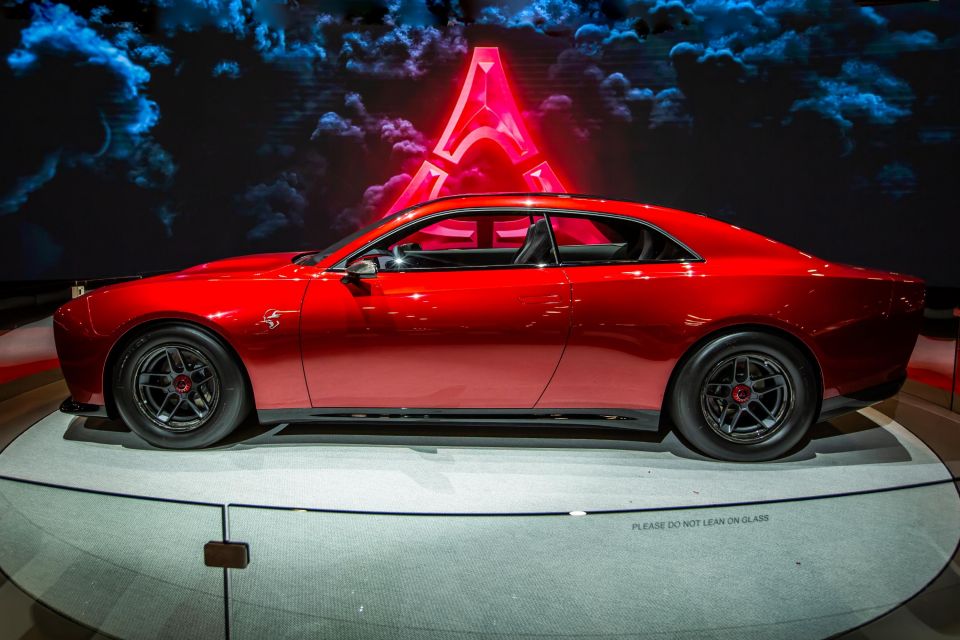
The Charger Daytona SRT concept was revealed with numerous features unusual for an EV.
That includes the so-called Fratzonic exhaust, which uses an external speaker that connects to the throttle position and speed of the vehicle and pushes sound out through a rear outlet. It can reach 126 decibels – as loud as a supercharged V8-powered Challenger or Charger Hellcat.
The concept also features an R-wing aerodynamic pass-through front spoiler to enhance downforce, plus the eRupt multi-speed transmission providing an electro-mechanical shifting experience.
The concept also featured a hatchback. Should the production version do the same, it would be the first time since the front-wheel drive, four-cylinder 1981-87 Charger that this nameplate has been used on a hatch.
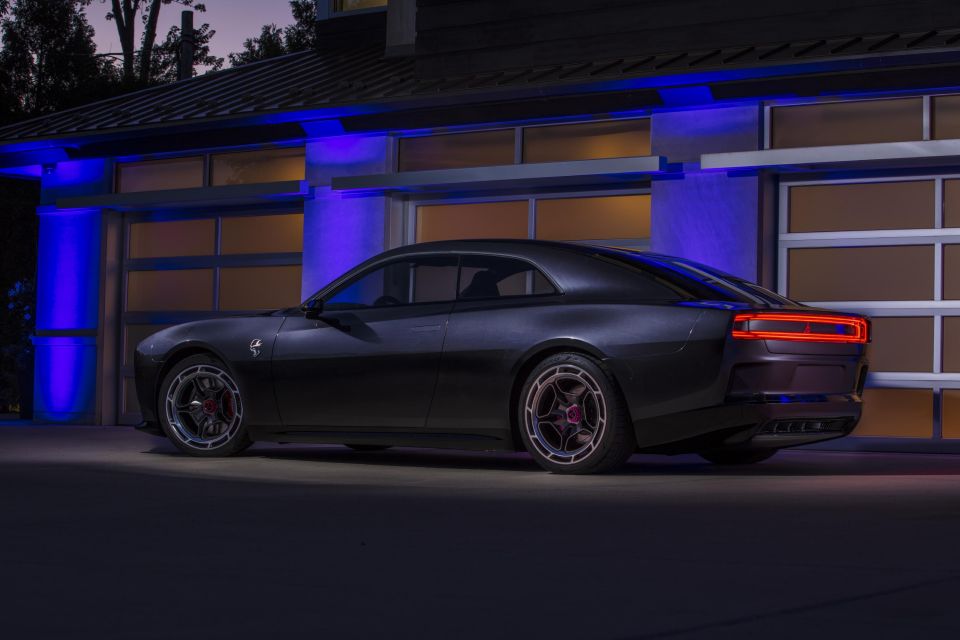
Stay tuned for all the latest.
William Stopford is an automotive journalist based in Brisbane, Australia. William is a Business/Journalism graduate from the Queensland University of Technology who loves to travel, briefly lived in the US, and has a particular interest in the American car industry.


Max Davies
6 Days Ago


Josh Nevett
5 Days Ago


Max Davies
5 Days Ago


Max Davies
3 Days Ago


Neil Briscoe
2 Days Ago


Max Davies
1 Day Ago